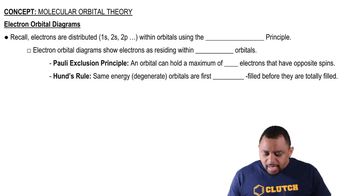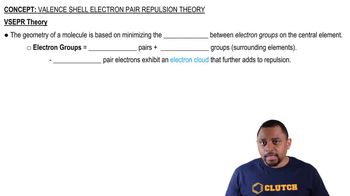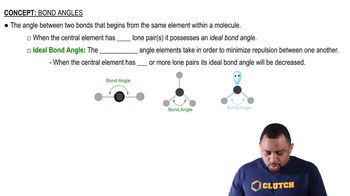Textbook Question
The valence electron configurations of several atoms are shown here. How many bonds can each atom make without hybridization? a. F 2s22p5
 Tro 6th Edition
Tro 6th Edition Ch.11 - Chemical Bonding II: Molecular Shapes, VSEPR & MO Theory
Ch.11 - Chemical Bonding II: Molecular Shapes, VSEPR & MO Theory Problem 56
Problem 56 Verified step by step guidance
Verified step by step guidance



The valence electron configurations of several atoms are shown here. How many bonds can each atom make without hybridization? a. F 2s22p5
The valence electron configurations of several atoms are shown here. How many bonds can each atom make without hybridization? c. Be 2s2
Write orbital diagrams (boxes with arrows in them) to represent the electron configuration of carbon before and after sp3 hybridization.
Write orbital diagrams (boxes with arrows in them) to represent the electron configurations of carbon before and after sp hybridization.
Which hybridization scheme allows the formation of at least one p bond? sp3, sp2, sp3d2